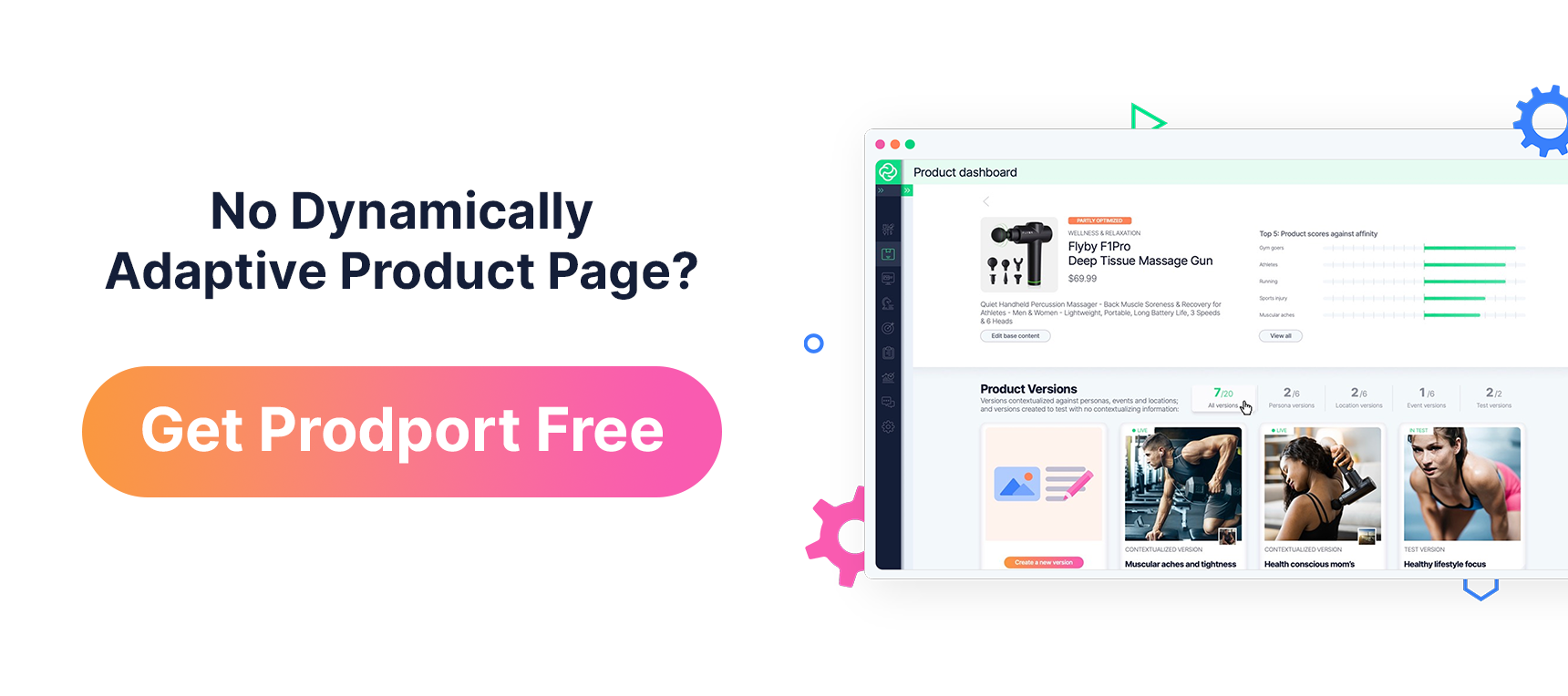In online fitness retail, standing out among competitors can be challenging. However, a leading fitness equipment and software company collaborated with a savvy marketing team and discovered an innovative approach to overcome this challenge: the bottom-up segmentation and personalization approach.
This strategy involves tailoring content to align with users’ preferences and needs based on how they interact with product pages. And the results were remarkable, with higher engagement and a significant increase in conversions.
Let’s explore how this company harnessed the power of personalization to achieve these results.
Understanding User Behavior
Traditionally, most companies use a top-down approach to managing the e-commerce funnel. This approach involves using content to acquire and engage prospects through experimentation and placing bets on various content hooks without knowing if and how it will work.
When looking at store conversions, most CRO experts will look at a moving trend and infer based on devices, promotions, events, and seasonality. They often believe that one size fits all, and a big part of the conversion happens close to sales events, especially in Q4.
But with the bottom-up approach to segmentation and personalization, we work with known content and audiences, which leads to more effective and efficient funnel management.
Crafting Personalized Experiences
Working with the marketing team, we uncovered valuable insights about their target audience. We noticed a distinct trend among fitness enthusiasts residing in warmer states. Instead of purchasing products mostly in Q4, these users opted for indoor workouts due to the scorching temperatures outside during the spring. Armed with this understanding, the team created a compelling content strategy that catered to the workout preferences of users in warmer climates right when they visit the product page.
The team developed personalized product page versions designed specifically for users in warmer states. Their objective was to create a connection by acknowledging the users’ need for indoor workouts. By showcasing a variety of indoor fitness equipment and accessories, with natural views of the state they are in, targeted to only users in warm states, the team effectively addressed the challenge of exercising in a controlled environment. They highlighted the benefits of indoor workouts, such as climate control, convenience, and the ability to exercise without weather constraints.
The team also recognized the importance of striking an emotional chord with their audience. They tailored their content to evoke feelings of motivation and inspiration, tapping into the users’ desire to maintain an active lifestyle despite the intense heat outdoors.
By incorporating vibrant imagery and captivating narratives, the team successfully conveyed the message that fitness knows no boundaries, even within the comfort of one’s home or a local gym.
Optimizing the Customer Journey
In addition to content personalization, the team acknowledged the impact of device segmentation on conversion rates. They observed that mobile users were exhibiting lower conversion rates compared to their desktop counterparts.
In response, the team devised a strategy to provide real-time offers that allowed mobile users to add products to their cart for later purchase. They also implemented retargeting techniques. They worked to strategically time the delivery of ads when users were more likely to be browsing from their desktop devices.
This approach aimed to optimize the customer journey and bridge the gap between mobile engagement and desktop conversions.
Driving Results through Personalization
By using the bottom-up approach to segmentation and personalization, the company saw a significant spike in conversion rates in these warmer states. Users responded positively to the tailored content, recognizing the company’s understanding of their unique workout challenges.
The personalized product page versions, supported by compelling imagery and motivational messaging, resonated with the audience, resulting in increased engagement and higher conversion rates.
Armed with this valuable data, the marketing team swiftly implemented two strategic actions:
1. Acquiring New Customers
Leveraging the power of the personalized content strategy that had proven to be highly effective, the team redirected traffic specifically to the product page versions tailored for users in warmer states. By focusing on increasing their market share in these specific regions, the company aimed to attract new customers who resonated with the personalized content and convert them into loyal patrons.
2. Engaging Existing Customers
Recognizing the significance of nurturing existing customer relationships, the team utilized Klaviyo and Attentive, two robust customer engagement platforms. With these tools, they reached out to their existing customers located in warmer states, employing the same personalized content strategy that had yielded exceptional results.
By connecting with their loyal customer base and reminding them of the company’s understanding of their unique workout challenges, they aimed to enhance customer loyalty and encourage repeat purchases.
With taking these proactive measures, the marketing team at the fitness retail company successfully capitalized on the potential of bottom-up segmentation and personalization. They strategically acquired new customers by targeting their content and marketing efforts towards specific states, while simultaneously engaging and nurturing existing customers through tailored messaging.
This multi-pronged approach ensured the company’s continued growth, improved market share, and strengthened customer relationships.
Conclusion
The success of this fitness retail company showcases the transformative power of bottom up segmentation and personalization – working with known content and audiences rather than placing bets and optimizing an expensive inefficient funnel.
By understanding the specific workout preferences and challenges faced by users in warmer states, they were able to create compelling content that resonated with their audience on a deeper level. Through personalized landing pages, motivational narratives, and optimized customer journeys, the company successfully increased engagement and drove a significant increase in conversions and revenue in time that was considered being the low season for their industry.
As the competitive landscape of online retail continues to evolve, adopting a bottom up personalized approach becomes increasingly critical. By leveraging the insights gained from segmentation and personalization, businesses can build stronger connections with their target audience, ultimately leading to improved conversions and sustained growth.

